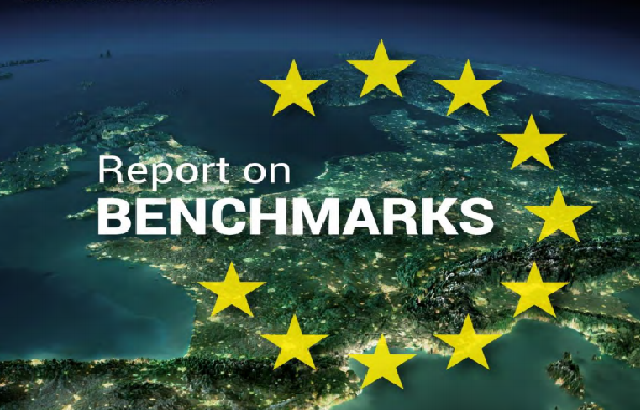The European Commission has adopted technical regulations for climate benchmarks, which will help investors align their investments with the Paris climate goals.
Commenting on the news, the Commission said that it will address the risk of ‘greenwashing’ and contribute to an increased level of transparency and comparability.
As of Thursday, only a provisional version of the delegated acts for the climate benchmarks has been published.
They lay out the final technical requirements for benchmark providers on how to design the EU Climate Transition Benchmarks (EU CTBs) and EU Paris-aligned Benchmarks (EU PABs), as well as necessary sustainability-related disclosures for all benchmarks.
The rules
The minimum standards for the climate benchmarks demand that the greenhouse gas (GHG) intensity or absolute GHG emissions include Scope 1, 2 and 3 GHG emissions and shall be at least 30% lower — or 50% for the stricter Paris benchmark – than the emissions of the investable universe.
There must also be a yearly decarbonisation trajectory of a 7% reduction in GHG emissions, on average; and for the EU PAB exclusions are based on fossil fuel thresholds and global norm violations.
A ‘green to brown share ratio’ for the eligible holdings is still under consideration as part of the taxonomy regulation.
The Commission explained that, by using GHG intensity and market capitalisation as the metric for emissions, it ensures comparability across sectors and is not biased for or against a particular segment.
Providers must:
- explain the minimum content of how ESG factors are reflected (excluding commodity benchmarks, interest rate and foreign exchange benchmarks) in the key elements of each benchmark’s methodology;
- explain in the benchmark statement how ESG factors are reflected (excluding derivative instruments regarding the credit risk transfer, and indices that are structured on financial contracts for difference or emission allowances, interest rate and foreign exchange benchmarks); and
- follow the minimum standards for EU CTBs and EU PABs if labelled as such, as well as the transparency requirements for the respective methodology
The mandatory requirements only need to be followed if providers pursue ESG objectives or choose to opt-in to the rules of the EU CTBs and EU PABs.
Changes following the consultation
The provisional regulation followed a public consultation.
To improve transparency and greater predictability for benchmark administrators, the Commission said that it deviated from the approach recommended by the Technical Expert Group (Teg) on Sustainable Finance in some cases; in particular in relation to ESG disclosure requirements.
Jaspreet Duhra, senior director, head of Emea ESG Indices at S&P Dow Jones Indices, welcomed the changes on ESG disclosures.
“We are pleased that the Commission has made changes to allow ESG information to be disclosed on an index provider’s webpage, which is a more transparent and practical solution for end users. We believe that an implementation period will be necessary because these new ESG disclosure requirements entail additional resources and time.”
Manuel Coeslier, portfolio manager and SRI analyst at Mirova and a member of the Teg, told Expert Investor: “These benchmarks are meant to become a guarantee on a minimum level of ambition regarding the financing of a climate-aware economy. As such, they have already proven to be very attractive for investors with numerous offers from the main index providers already available on the market.
“For now, [the regulation] ticks the main boxes and leaves field for innovation, which is exactly what it is supposed to do.”
Among the providers already offering EU climate benchmarks are S&P, MSCI and Solactive. BNP Paribas Asset Management announced it has adjusted the portfolio allocation of the BNP Paribas Easy Low Carbon 100 Europe UCITS ETF. It tracks the Euronext Low Carbon 100 Europe index, which was recently aligned with the EU PAB.
Market feedback
But Frédéric Ducoulombier, ESG director at index provider Scientific Beta, commented that its concerns have, in large part, not been addressed.
He said that a capitalisation-weighted index relative to decarbonisation and rough sector control unnecessarily reduces the scope of the regulation and would fail to protect against greenwashing.
“By classifying securities in a binary manner into high or low climate impact, instead of adopting a fine-grain analysis of the sectoral dimensions, the regulator incentivises portfolio decarbonisation strategies based on reallocation across sectors without any regard for the needs of the real economy,” he explained.
Ducoulombier also stated that the used carbon exposure measure, enterprise value, would deviate from existing standards and may not incentivise corporate efforts to decarbonise.
Not-for-profit think tank 2° Investing Initiative also criticised the carbon measure in a 2020 report. It suggested: “Emissions trajectories should be calculated using real economic outputs as denominators or using absolute pathways and be sector specific – in line with leading initiatives (such as Science-based Targets, Paris Agreement Capital Transition Assessment (Pacta), Katowice Banks).”
Attracting private investors
Valdis Dombrovskis, executive vice-president of the European Commission, responsible for an Economy that Works for People, commented: “One of the main objectives of our sustainable finance policy is to harness the power of private capital to achieve a climate-neutral economy by 2050.
“Today’s delegated acts will help climate-conscious investors who want to make the right decision and invest in our transition towards a climate-neutral economy.”
Coeslier added: “The willingness of institutional investors to switch benchmarks, as well as the ability given to retail investors to choose climate ambitious investment products, will be key to [their] success in the near future.”







